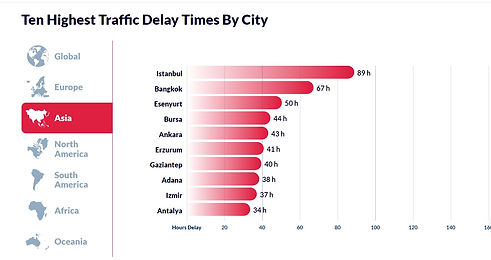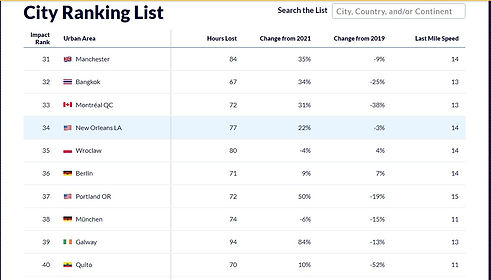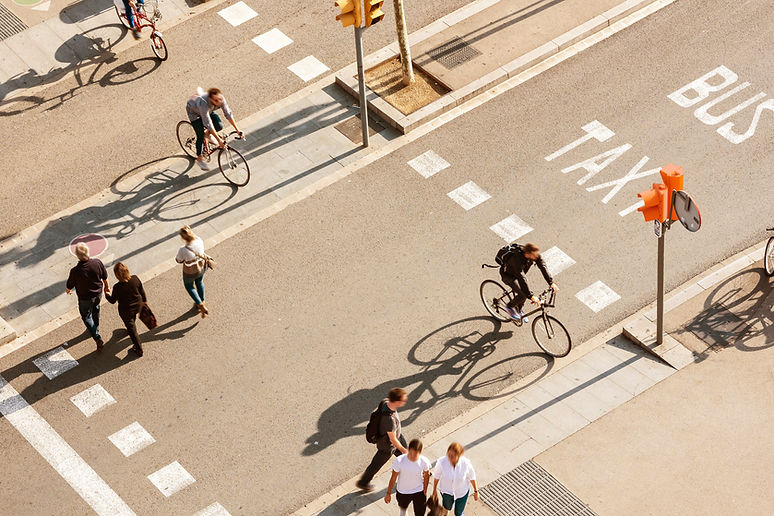Road Transport in Thailand





The diagram shows the 10 Highest Traffic Delay Times By City. We can see that Bangkok, as one of the main cities in Thailand, has second place in the Asia Region, which is 67 hours longer than other country cities. Bangkok still has the worst road congestion compared to Malaysia's cities.
The diagram shows the congestion rank worldwide. We can see that Bangkok, as one of the main cities in Thailand, has 32nd place in the world, which is 67 hours lost. Besides that, Bangkok has a 31% change compared to 2021 and -25% compared to 2019. This means that 2021 has a better road congestion situation than 2019, using change in 2022 as the central compared hour lost.


This diagram shows year-over-year speed changes in Bangkok and the three most frequent routes or destinations with congestion. Regarding peak speed, we can see that 2022 has the worst low rate overall, which means heavy congestion. The speed miles is 22 mph. Besides that, 2021 has the fastest off-peak rate, which means fewer cars on the road, with 34 mph. Furthermore, we can see that 2021 has the fastest speed when it comes to traveling within one mile of the downtown core, which is 15mph. So overall, we can see 2021 has a low congestion situation in Thailand compared to other years. We can see that the three areas are mainly Bangkok and Lat Krabang.

Why Traffic So BAD
THAILAND
01
Small Organic Road
The city in Thailand is characterised by its enormous geographical coverage and antiquated infrastructure. The expansion of the road is hindered by the proximity of residential construction projects in close proximity to the route. Despite the ongoing development of road infrastructure in Thailand, it has not been sufficient to accommodate the substantial increase in vehicle usage.
02
High Number Of Vechicle per capacity
There has been a consistent annual growth in the number of registered automobiles in Thailand between the years 2015 and 2023. The data indicates that the cumulative count of registered cars in Thailand amounts to 20.3 million, while the country's overall population stands at 71.8 million individuals. This implies that a household will possess a minimum of three or more automobiles. This condition has led to a significant predicament wherein many individuals opt for private automobile usage over public transportation, resulting in severe traffic congestion.
_edited.jpg)
Figure 1: Thailand's number of Registered Vehicle from 2015 to 2023
Source: CEIC
03
Over Abudance of Parking
The proliferation of parking facilities serves to promote the use of private vehicles. In the majority of nations, buildings are assigned a predetermined limit on the number of parking places they are permitted to have. According to the provisions outlined in the Buildings Control Act, it is mandatory for commercial buildings situated in Bangkok to allocate a specific minimum number of parking spaces, which is determined based on the size of the building.
04
Clustered Development Blocks
The primary factor contributing to this point is inadequate urban planning. This phenomenon can be attributed to urban expansion restricting access to some residential neighborhoods due to the lack of public transport infrastructure outside the main roadways. Urban residents must traverse a distance exceeding one mile daily to avail themselves of the necessary amenities. In Thailand, citizens prefer personal motor vehicles, such as motorcycles or cars, as their primary mode of transportation, opting to travel through narrow alleyways rather than relying on public transportation systems.

Problem Solution
HOW TO SOLVE ?
Public Transport Improvement
Price Mechanisms
One Way Road System
Coordinated Planning
Public Transport Improvement
One possible approach to address this issue is the implementation of novel bus lane systems along prominent roadways such as Petchburi and Sukhumvit. Additionally, expanding bus routes on motorways and establishing primary bus routes that traverse and encircle the city could also be considered.
Price Mechanisms
Price controls may also be needed to limit private car travel. Although this option may impact regular public routines, its implications must be carefully evaluated. Price mechanisms may affect commuter travel formats, routes, destinations, and times. Singapore regulates traffic with many price regulations. These include higher fuel prices, tollway fees, private vehicle passing fees in restricted zones, and single-passenger automobile restrictions. Bangkok should also explore these measures.
Rearrange One Way Road System
Coordinated Planning
Clockwise one-way systems are optimal for nations where transportation is performed in the opposite direction. To adhere to the clockwise system, this entails reversing the north-south orientation of Phayathai Road, Rajdamri-Rajprarop, Chidlom Road, Wireless Road at the intersection of Ploenchit and Petchburi Roads, and North Nana Road. If an effective one-way system is implemented in nine typically congested areas and five meetings, traffic congestion will significantly decrease.
Coordinated planning in Thailand, especially in traffic-heavy Bangkok, can reduce congestion by incorporating several solutions. Increasing bus, rail, and subway service encourages people to use public transit. Traffic flow can be optimized and bottlenecks reduced by using adaptive traffic signals and real-time traffic monitoring. Planning for public and non-motorized transport, such as pedestrian zones and bike lanes, supports shorter trips by these modes. Combining infrastructure development, technological solutions, and urban design can reduce Thailand's urban traffic.
TAN JUN JIE 286772

